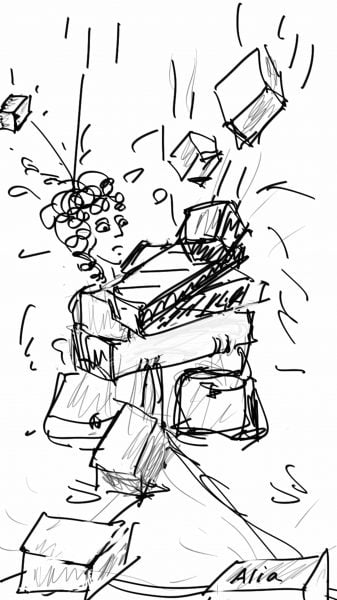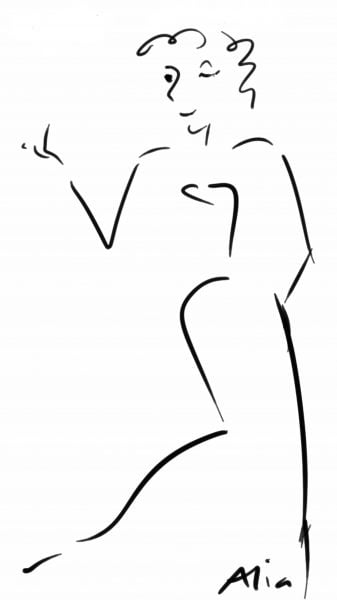I teach writing part-time at a state university. I’ve done so for the last 20 years. When I started, I was frustrated when the only thing I could say to a student was, “This sentence isn’t right.” I could tell them how to fix it, but I couldn’t explain why. Back in grade school, I just ignored all the grammar stuff. I always knew which constructions were correct, and how to fix the the wrong ones. My family spoke standard English and I read incessantly, so that was easy for me. Grammar rules, however, were confusing and annoying. I blithely ignored them.
But now I needed to understand the damn things. I engaged in a pretty rigorous study of how to teach writing, how to critique effectively, grammar, structure, and so forth. I brought piles of books home from the school library, and any that were boring or badly written, I threw aside, then picked up a new one. I mean, it’s writing. If some expert can’t write a book about it that is interesting, well…
I learned a lot in my home-made study course, and not just about writing. I’ve found that strategies for writing well (and for critiquing writing) translate very nicely into dance. One of the reasons is that writing is very much an improvisational activity. Even if we know what we want to write to write about, our actual putting together of words is done off the cuff–we may stop once in a while to think of a word, and we may revise quite carefully, but the initial act of putting words on paper is a creative improvisation.
Over time, I have adapted many models of writing, revision, and critique to dance. One that I especially like is the quick assessment model, Fluency, Clarity, and Correctness–in that order. This means when we assess a dancer, we look first to fluency. If we don’t find it, if the dancer’s movement is awkward, hesitant, off-time, or whatever, we stop there and work on that.
Let’s look at these concepts one by one, and how they work in writing as well as dance. Today, we will look at…
Fluency
In writing, fluency mean the ability to put words on paper with relative ease. You understand the language and can easily craft suitable sentences. Freewriting, for example, increases fluency, as we write fast without stopping or judgement. We learn to write without constantly stopping to think about what comes next–we get into a zone, and we trust our pen/keyboard/body to come up with what we need. We don’t think about each sentence we write. We just write–and if anything needs correcting or polishing, we do that later.
In dance, fluency means we can dance easily, respond to the music, and generally enjoy ourselves dancing as we improvise. It’s about being able to easily transition, to trust ourselves that what we need will come out, and to be able to be in a zone and enjoy the moment.
One Skill at a Time
In both writing and dance, we will not get very far if we can’t create with ease. I’m not saying we don’t ever struggle to make our work shine–of course we do! But we have internalized that skill of allowing the body to do its thing without lots of agony or second guessing. In writing we learn to disconnect the editor from the creator. We just let the words out, and we polish them later. In dance, we also learn to disconnect the editor from the creator. When we dance, we let go of thinking and just move with the music. Both embrace a flow state, full engagement with the present moment.
As a teacher (of both writing and dance), my first goal is that students can comfortably create. I assign freewriting to my college classes, and to my dance students, I assign freeform improvisation. I don’t worry in the beginning if their work makes sense, if their movement is pretty, or even if they are belly dancing. The first skill is letting go of thinking and judgement; it is letting the body move intuitively with the music.
In the idea we’ve been discussing, One Skill at a Time, fluency is one skill. It’s a big one, and there are smaller skills along the way, but they are all in the same club. So we don’t get all exercised about the other stuff. I’ve talked before about that little pipe in our head through which ideas flow. As we begin learning, there is a lot of rusty crud backed up in there. As with an unused faucet, it has to come out first so the clear water can flow. Worse, getting all knotted up with thinking (or freaking out about the rust) cuts off the flow entirely. So at first, we just let it all out. One skill at a time. If we have to worry about how we look, whether we are doing “allowable” movement, we will just freeze up entirely and that will be the end of us.
Baby steps
Once we have mastered basic fluency, when we can follow the music without getting in our own way, we can add in another skill, like incorporating our dance vocabulary, or expressing more complex music, or whatever. But still, one skill at a time. Even if that time is only 30 seconds, and then we switch to keeping our posture for a while, or our pretty hands, or feeling our feet interact with the earth–we keep it simple. Because when we try to do too much at once…

It’s a DISASTER.
We practice in the studio so when we go to dance, we can just let go and dance. And one of the most important things we practice–is letting go. So we can dance. Effortlessly. Ahhh!
Love,
Alia
PS If you would like to just let go and dance, you might like Effortless Improvisation! It’s a great six-week improv crash course suitable for home dancers and performers alike. Registration closes on Sunday, August 25th, so please have a look right away.
Upcoming events:
I’ll be performing September 14, 2019 at Belly Dance Nights at the Main St. Museum in White River Junction, VT. We start at 7PM, and it’s only $15 for advance sales. This is the funnest show and dance party going (and there’s plenty of parking). Please come join us!






No comment yet, add your voice below!